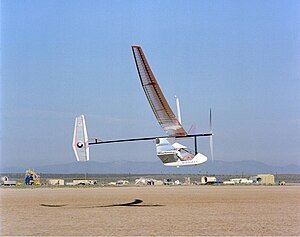The 1988 Kanellos Kanellopoulos Human-Powered Flight
On April 23, 1988, a significant milestone in the field of human-powered flight was achieved by Kanellos Kanellopoulos. This historic event took place in Greece, where Kanellopoulos successfully flew across the Aegean Sea in an aircraft named Daedalus. The flight covered an impressive distance of approximately 115 kilometers, starting from the island of Crete and ending in Santorini.
Emulating the Myth of Daedalus and Icarus
The flight of Kanellos Kanellopoulos in the Daedalus aircraft was a tribute to the ancient Greek myth of Daedalus and Icarus. According to the myth, Daedalus, a skilled craftsman, constructed wings made of feathers and wax for himself and his son, Icarus. They used these wings to escape from the labyrinth on the island of Crete. However, Icarus flew too close to the sun, causing the wax on his wings to melt and leading to his tragic fall into the sea.
Kanellopoulos’s flight not only paid homage to this myth but also aimed to demonstrate the potential of human-powered flight. By choosing the name Daedalus for his aircraft, he symbolized the ingenuity and determination of human beings to conquer the skies using their own physical power.
Setting Records and Pushing the Limits
The flight of Kanellos Kanellopoulos in the Daedalus aircraft broke records for both the longest distance and duration achieved in human-powered flights. This remarkable feat showcased the possibilities of human-powered transport and provided valuable data for scientific research and the development of sustainable transportation technologies.
The flight lasted for approximately 3 hours and 54 minutes, highlighting the endurance and physical capabilities of the pilot. Kanellopoulos pedaled the aircraft, utilizing his own strength to generate the necessary power for flight. This impressive achievement demonstrated that human-powered flight was not only a possibility but also a viable alternative to traditional forms of transportation.
Implications for Scientific Research and Sustainable Transportation
The success of Kanellos Kanellopoulos’s flight had far-reaching implications for scientific research and the future development of sustainable transportation technologies. The data collected during the flight provided valuable insights into the aerodynamics and energy efficiency of human-powered aircraft.
This groundbreaking achievement inspired further research and innovation in the field of human-powered flight. Scientists and engineers were motivated to explore new designs and technologies that could enhance the performance and efficiency of human-powered aircraft. The lessons learned from Kanellopoulos’s flight contributed to the advancement of sustainable transportation solutions, with potential applications in areas such as aviation, cycling, and even urban mobility.
In conclusion, the 1988 Kanellos Kanellopoulos Human-Powered Flight was a momentous event that pushed the boundaries of human achievement in the field of aviation. By successfully flying across the Aegean Sea in the Daedalus aircraft, Kanellopoulos not only emulated the myth of Daedalus and Icarus but also demonstrated the potential and limitations of human-powered flight.
This historic flight set records for the longest distance and duration achieved in human-powered flights, providing valuable data for scientific research. It also paved the way for the future development of sustainable transportation technologies, inspiring further innovation in the field. The legacy of Kanellos Kanellopoulos’s flight continues to influence and shape the world of aviation and sustainable transportation to this day.
For more information about the 1988 Kanellos Kanellopoulos Human-Powered Flight, you can refer to the following external references:
– [Link 1: The Daedalus Project](https://web.mit.edu/16.82/www/Daedalus2/index.html)
– [Link 2: The Myth of Daedalus and Icarus](https://www.greekmyths-greekmythology.com/myth-of-daedalus-and-icarus/)
Remember, this historic event marked a significant milestone in human-powered flight and continues to inspire and drive innovation in the field of sustainable transportation.

